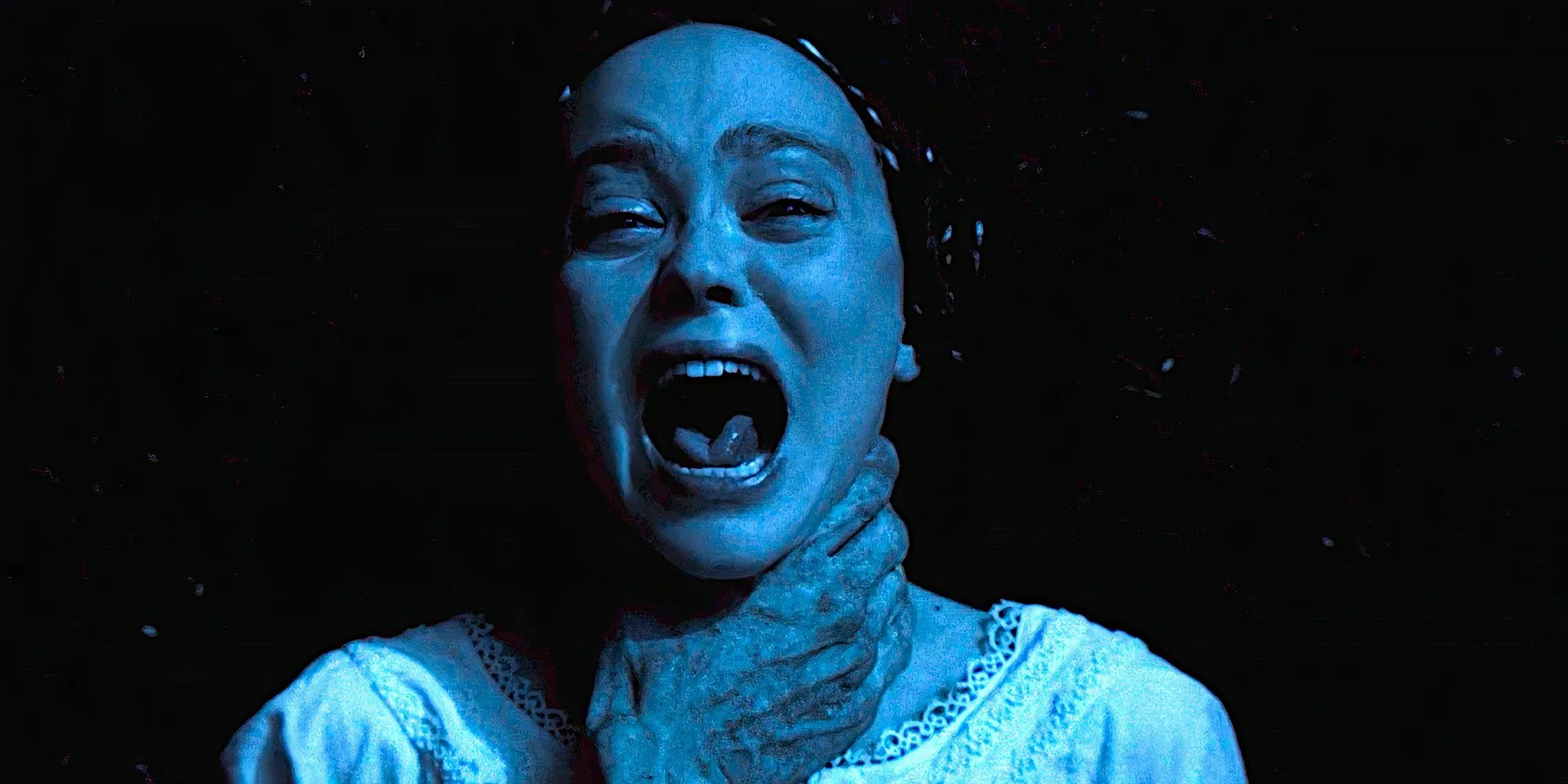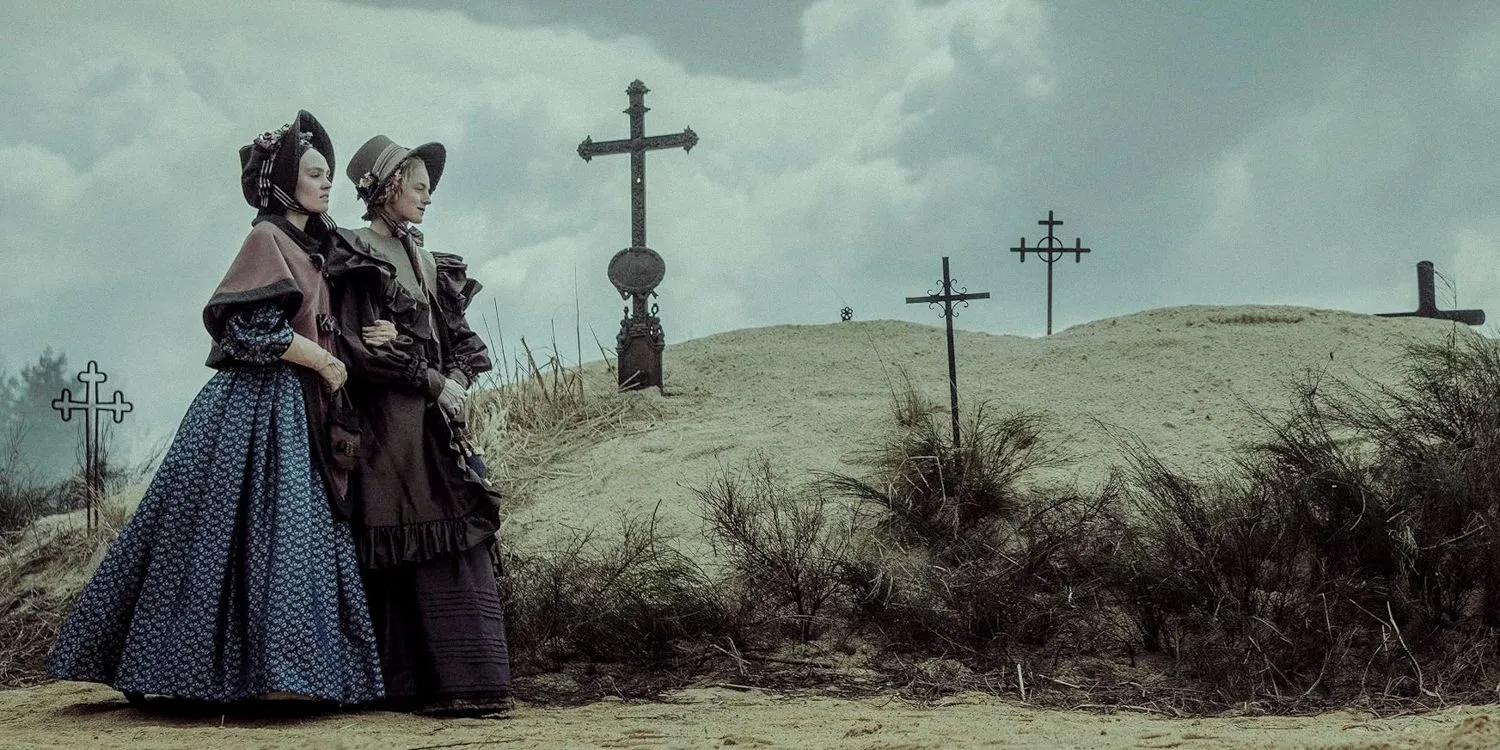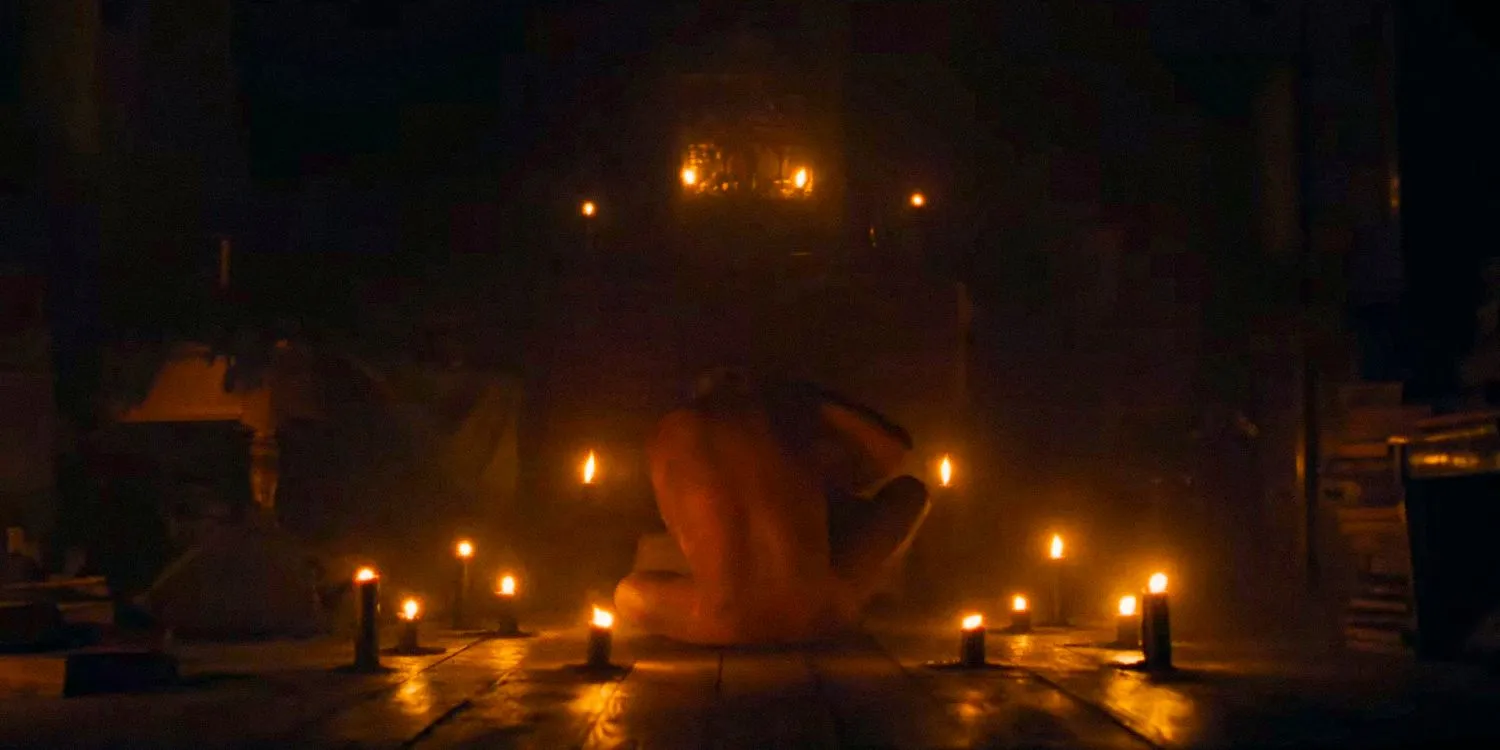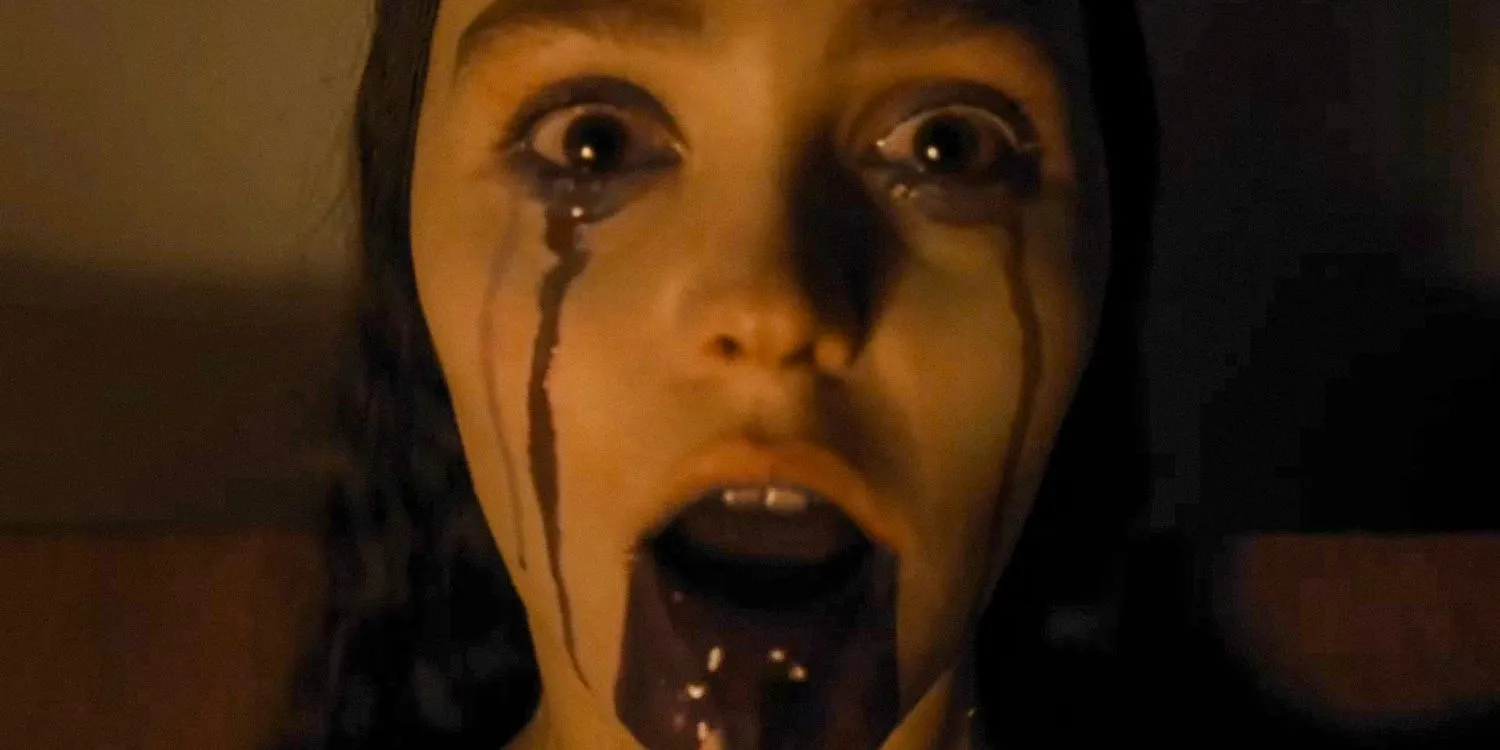
Robert Eggers’ latest gothic horror film, Nosferatu, revisits the timeless vampire myth, elevating it with a fresh sense of fear that climaxes in a thought-provoking interplay of violence and desire. While the film draws heavily from Bram Stoker’s classic novel, Dracula, Eggers opted for this adaptation because of its straightforward storyline and the prominent role played by the female protagonist.
Starring Lily-Rose Depp as Ellen Hutter, the narrative is set in 1830s Wisborg, Germany. Ellen is a recently married woman, whose husband, Thomas (portrayed by Nicholas Hoult), is sent on a business trip to Transylvania by his real estate firm. It is during this trip that Thomas finds himself ensnared by Count Orlok, played by Bill Skarsgård. Orlok, revealed to be a vampire, blurs the line between reality and nightmare while tormenting Thomas, who ultimately escapes his grasp by leaping from Orlok’s castle into a nearby river.
As Orlok feasts on Thomas’s vitality, Ellen suffers a resurgence of a childhood affliction characterized by ominous dreams, sleepwalking, and episodes marked by terror and ecstasy. This disturbing transformation puzzles her friends, Friedrich and Anna Harding (Aaron Taylor-Johnson and Emma Corrin), who offer her shelter during Thomas’s absence. Their concern leads them to enlist the help of a disgraced expert in the dark arts, Professor Von Franz (Willem Dafoe), in a desperate bid to decipher the cause of Ellen’s malady.
With guidance from Von Franz, the group begins to unveil the real nature of Ellen’s affliction as Thomas returns to Wisborg, just as Orlok makes his menacing entrance into the city. Accompanied by a horde of rats and a disease that ravages the inhabitants, Orlok’s pursuit of Ellen escalates, motivated by his insatiable thirst for her blood. In a desperate attempt to rid their city of this malevolence, Thomas, Sievers, and Von Franz plot to eliminate Orlok while he slumbers in his coffin. However, Ellen invites the vampire into her chamber for a final showdown that will determine the fate of those she loves.
Why Count Orlok Desired Ellen
Desire and Lust Fueled His Malevolent Scheme

Upon Orlok’s arrival in Wisborg, he confronts Ellen, unveiling the startling truth that she inadvertently called forth his dark presence. In her solitude and distress, the lonely Ellen once prayed for companionship—a cry that reached the very essence of Count Orlok. With a latent psychic gift, she established an unholy bond with the demon, pledging herself to him, thus sowing the seeds of her impending doom.
Though the love and marriage to Thomas momentarily shield her from Orlok’s dark influence, it also breaks her pledge to him, setting the narrative of Nosferatu into motion. Their connection, though not one of genuine love, transforms into an overwhelming obsession for Orlok; it becomes a fixation bordering on dependence. This profound desire compels him to manipulate Thomas into traveling to Transylvania.
Orlok cunningly lures Thomas into signing an agreement under false pretenses—believing it tied to a business venture with Orlok’s properties, while it secretly dissolves his marriage bonds to Ellen. With Thomas’s marital vows rendered void, Orlok desperately seeks Ellen’s consent to renew her pledge, prompting him to journey to Wisborg. Only after she willingly binds herself to him can he quench his ravenous thirst for her blood.
How Ellen Ultimately Defeated Count Orlok
Her Body Became the Tool to End His Reign of Terror

Clad in her wedding gown, Ellen beckons Orlok into her chamber for their final encounter—an act of defiance and acceptance of his dominion over her. She solemnly reiterates her commitment, uttering the words “I do,”thereby reinstating the bond she forged years prior.
The term “Nosferatu”is thought to stem from the ancient Romanian word “nesuferitu,”which translates loosely to “the offensive one.”In a tactical maneuver, Ellen effectively used her body as bait, knowing it would distract and enthrall Orlok. As he feeds, she draws him closer, ultimately ensnaring him until the sun rises, causing his demise. In this climactic moment, Ellen reclaims control, transforming from a victim of his torment into the architect of his downfall.
What Count Orlok Truly Represents
His Origins Explained Through Narrative

Orlok’s origins come into light as Thomas recuperates in a convent in Transylvania. One of the elder sisters recounts, through a translator, that Orlok was once a powerful sorcerer, so corrupt that upon his death, the Devil reclaimed his soul, permitting him to roam the earth as an undead creature.
|
Key Details on Robert Eggers’ Filmography |
|||||
|---|---|---|---|---|---|
|
Movie |
Release Date |
Budget |
Box Office |
RT Tomatometer Score |
RT Popcornmeter Score |
|
The Witch |
February 19, 2016 |
$4 million |
$40.4 million |
91% |
60% |
|
The Lighthouse |
October 18, 2019 |
$11 million |
$18.3 million |
90% |
72% |
|
The Northman |
April 22, 2022 |
$70-90 million |
$69.6 million |
90% |
64% |
|
Nosferatu |
December 25, 2024 |
$50 million |
Pending |
87% |
76% |
This origin myth elucidates his supernatural prowess, which encompasses teleportation, psychic communication, animal manipulation, and the ability to conjure disease. His grotesque appearance is a testament to his true nature—a reanimated corpse, a representation of death that embodies immeasurable evil. Orlok’s character transcends that of a mere monster; he serves as a manifestation of calamity itself, embodying a force of nature.
The Fate of the Hardings
The Hardings Bear the Weight of Suffering



The Hardings, close friends to the Hutters, unwittingly become entangled in Orlok’s sinister plans, as he threatens their lives unless Ellen consents to his desires. Ultimately, Anna falls prey to Orlok’s minions, succumbing to a bite from his rat-infested army, while Friedrich suffers from sleep deprivation throughout the ordeal.
Tragedy strikes when Orlok invades their home, taking the lives of their two young daughters. In a horrifying confrontation, Anna rushes to their aid only to meet her own demise, compounded by the loss of her unborn child. Stricken by grief and plagued by the vampire’s incomprehensible cruelty, Friedrich spirals into despair, ultimately facing his own fate as he retreats to his family’s mausoleum to perish beside his dearly departed wife.
The Fate of Herr Knock
Knock: A Hero’s Servant Transformed

In a critical role, Knock serves merely as a pawn in Orlok’s grand design, driven to madness by the dark influence of the vampire. His connection with Orlok stems from a personal foray into the occult, as revealed by Von Franz when he discovers Knock’s sinister rituals, linking him to the count’s malevolence.
Before meeting his tragic end in Orlok’s coffin, Knock discloses that he sold his soul to the vampire in an ill-fated bid for power, believing he would ascend to nobility. Instead, he becomes a mental prisoner, burdened with delivering Orlok’s coffin to Wisborg, serving as a distraction from Orlok’s impending return to Ellen.
Robert Eggers’ Insights on the Ending of Nosferatu
A Modern Take on Classic Renaissance Themes





In a discussion with SYFY, Eggers revealed that the climactic scene between Ellen and Orlok was intentionally designed to echo the ‘Death and the Maiden’ motif prevalent in Renaissance art. This iconic representation often features a young woman intertwined with Death, usually depicted as a skeleton.
There is not a specific ‘Death and the Maiden’ painting, or engraving that this is based on…But it’s a motif that’s been done so well, so many times in our history that it was fun to try our hand at it.
This artistic choice accentuates the contrasting nature of Ellen’s beauty against Orlok’s horrific visage, serving as a profound metaphor for the ongoing struggle between life and death. It encapsulates the essence at the heart of Nosferatu: an exploration of good versus evil, both external and internal.
Interpreting the True Meaning Behind Nosferatu’s Conclusion
Ellen’s Empowerment in Her Final Moments

While Count Orlok stands as the most recognizable entity within Nosferatu, Lily-Rose Depp’s portrayal of Ellen Hutter undoubtedly takes center stage. The film intricately weaves around Ellen’s transformation and her complex relationship with Orlok. Beginning with her lonely plea for connection, she unwittingly unleashes a chain of death and despair orchestrated by the deceiving Count.
Ultimately, Ellen chooses to confront the darkness within herself rather than allowing it to dictate her life, making an enormous sacrifice that determines the course of the lives around her.
Her struggles are met with dismissal, particularly from the men in her life, who regard her afflictions as mere fantasies—an indication of the pervasive disregard for women’s experiences during the Victorian Era, a reality that echoes through the ages. Her plight highlights ongoing issues of sexual repression and societal constraints faced by women.
In a paramount conclusion, Ellen seizes control. No longer a passive participant, she confronts Orlok, asserting dominance over their relationship, ultimately sealing his fate. This act allows her to absolve herself of the guilt that has weighed upon her since their encounter, delivering a potent narrative arc of redemption.
The final encounter serves as a broader commentary on choice—underscoring that Orlok’s power is contingent upon her consent. By welcoming him into her quarters, she makes a conscious decision to sacrifice herself for the greater good, embodying the struggle between moral righteousness and the seductive ease of succumbing to evil. Each day presents an opportunity for individuals to choose the path of integrity over complacency.
Source: SYFY



Leave a Reply